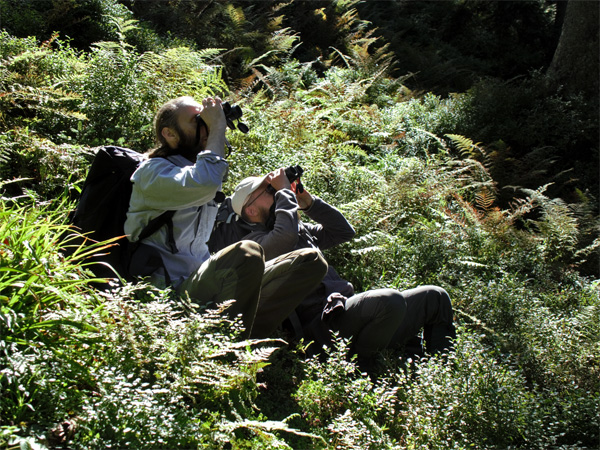Relatives reproduce synchronously – new publication in Proceedings of the Royal Society B
A paper reporting the latest research on the generative reproduction of trees has been published in the journal Proceedings of the Royal Society B. It answers a fundamental question for understanding the evolution of reproduction – is the pattern of seed production over time encoded in genes, and therefore heritable?
In perennial plants, masting, i.e. seed production synchronised on a large spatial scale, is common. At the population level, this phenomenon results from variation and synchronisation between individuals. Hypotheses explaining this pattern of reproduction often refer to its evolutionary advantage. Long-term observations of many individuals are necessary to understand the influence of genetic and environmental factors on a plant's reproductive phenotype. Such observations – which are extremely rare – have been carried out for several decades by Magdalena Żywiec's team from our Institute.
The published article, which is the result of cooperation between our researchers and scientists from Adam Mickiewicz University in Poznań and Kazimierz Wielki University in Bydgoszcz as part of a project funded by National Science Centre (Narodowe Centrum Nauki), presents an analysis of the genotype and phenotype (year-to-year seed production, size) of more than 100 rowans (Sorbus aucuparia) against the background of microhabitat conditions (soil properties, topography, length of the growing season, access to light). By taking a comprehensive approach to the problem, unique results were obtained that explain the mechanism of masting in trees. The relatedness between trees was shown to influence the similarity of the year-to-year pattern of seed production. Seed production of more related trees was better synchronised and had a similar level of variability over time. Microhabitat conditions influenced both of these seed production pattern characteristics. Although this influence was strong, the pattern encoded in the genes remained apparent. In conclusion, the masting phenotype is heritable and can respond to natural selection.
The original article:
Bogdziewicz M., Chybicki I., Szymkowiak J., Ulaszewski B., Burczyk J., Szarek-Łukaszewska G., Meyza K., Sztupecka E., Ledwoń M., Piechnik Ł., Seget B., Kondrat K., Gazda A., Żywiec M. 2024. Relatives reproduce in synchrony: kinship and individual condition shape intraspecific variation in masting phenotype. Proceedings of the Royal Society B 291: 20232732. DOI

Counting rowan fruit bunches.
Photo: Magdalena Żywiec

Soil temperature reading.
Photo: Magdalena Żywiec

Annual fruit count.
Photo: Magdalena Żywiec

Rowan fruit bunch.
Photo: Magdalena Żywiec





